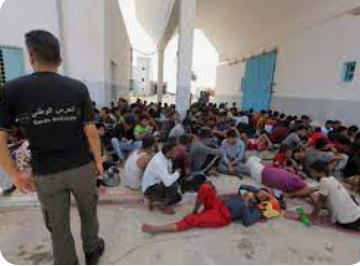
This doubled the 2022 figure, according to the Tunisian National Guard on Saturday.
Tunisia, alongside Libya, is the principal departure point for thousands of migrants hoping to reach Europe.
The number intercepted by Tunisian authorities was 69,963 for the first 11 months of 2023, compared to 31,297 in the same period last year, according to data from the National Guard.
Foreigners made up 78 percent, while the rest were Tunisians.
That was a significant shift from 2022 when 59 percent were foreign migrants.
The exodus accelerated in February after Tunisia’s President Kais Saied denounced the arrival of “hordes of illegal migrants” from sub-Saharan Africa whom he claimed were part of a “criminal plan” aimed at “changing the demographic composition” of the country.
The speech triggered a violent anti-migrant campaign, prompting several African countries, notably the Ivory Coast and Guinea, to repatriate thousands of their citizens. At the same time, many migrants attempted to flee by boat, leading to several sinkings.
The United Nations and humanitarian NGOs have accused Tunisia of “expelling” migrants to Libya and Algeria, which Tunisian authorities deny.
International humanitarian sources told AFP that at least 5,500 migrants have been expelled to the border with Libya and 3,000 to Algeria since June, including a large number caught trying to leave for Europe.
More than 100 migrants have died in the Libyan-Tunisian desert this summer, they said, adding that “collective expulsions to Libya and Algeria continue”.
Most of the intercepted migrants were caught on Tunisia’s eastern coastline close to Sfax, which is only around 130 kilometres (80 miles) from the Italian island of Lampedusa.
This summer, a wave of departures was triggered by a brawl in Sfax in which a Tunisian was killed, leading police to send hundreds into the desert.
AFP













